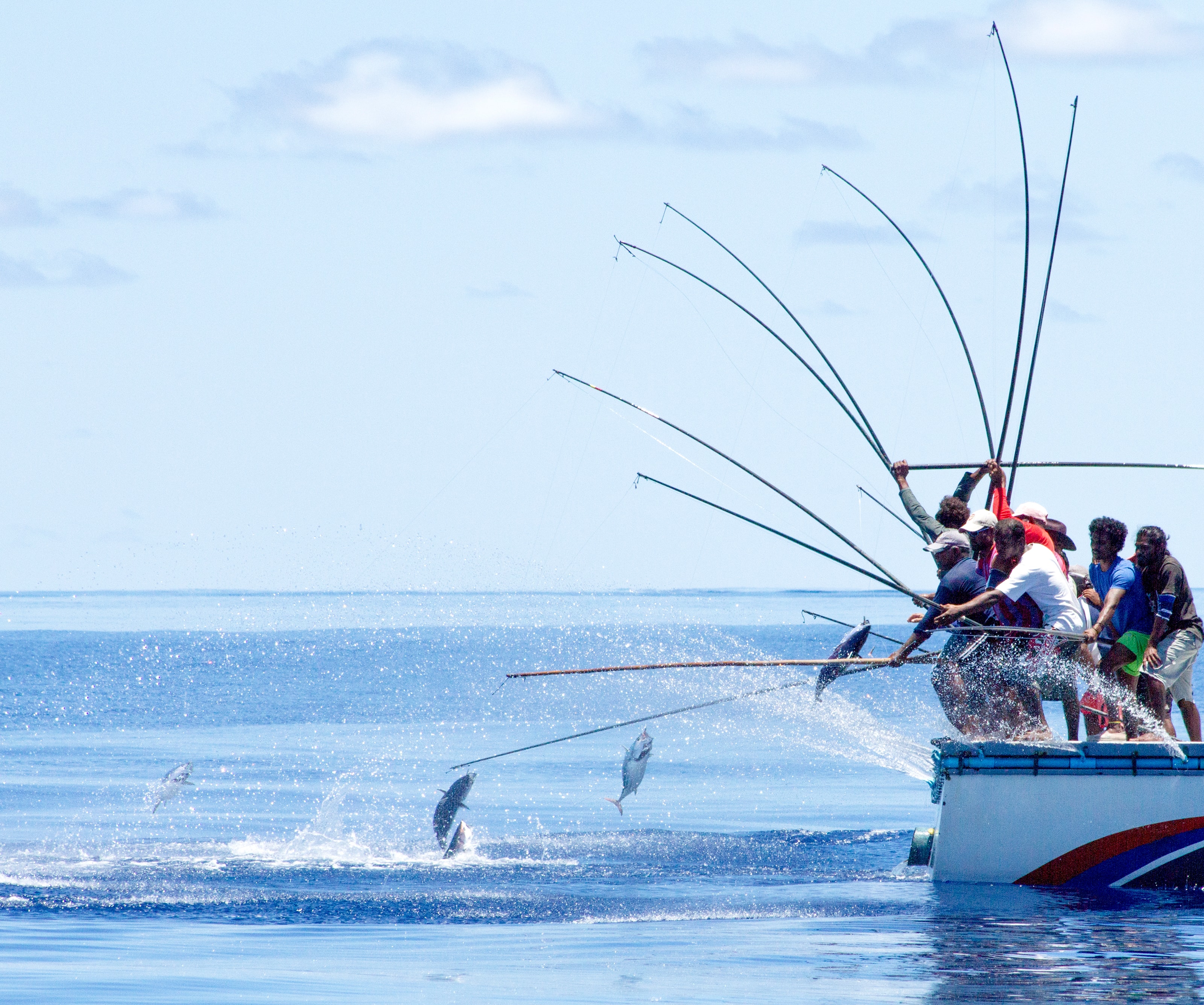The Maldivian Fishermen

Date : November 13, 2019 | Time : 17:00:32
For centuries island communities were built and sustained only from the gift of the oceans. And even today whole communities across the country depend on income from tuna fishery for their livelihood. Thousands of families in the islands build their homes, educate their children and take care of their needs only with income from tuna fishery.
With the exception of the last few decades there has been little or no change in the way fishing is done in the Maldives.
Fishermen go out to sea at the break of dawn in search of schools of tuna. The elderly generation when they first started off they also went on sailing dhonis, and few vessels back then were mechanized. The only difference now is that vessels can travel faster and come back home earlier with a better catch.
Tuna fishery in the Maldives has always followed traditional methods.
Even
with a greater degree of commercialization today, fishing vessels are owned by
families, the crew is from the island and each dhoni helps sustain several
families on an island. There is no industrial fishery as seen in many parts of
the world where large companies own several vessels and the fishermen are just
their employees.
While there are on average of twelve dhonis operating typically from fishing islands, the vessels belong to as many families. The crew of each vessel is made of people from the community, who form a close bond among themselves looking after each other in times of need.
The
fishermen are all stakeholders of the dhoni, who share all the proceeds. The
share of the proceeds that go to the boat owner is dependent on what the crew catch
during each day of fishing. If fishing is good the whole economy within the community
enjoys its rewards.
The Maldives fishery has evolved sustainably during the last four decades. But it is just a case of a highly traditional industry being infused with modern technology and modern live a board conveniences for the crew. Dhonis have grown bigger, they have been mechanized and now they have the facilities to keep the catch in premium condition until they reach the collector vessels or centers of MIFCO where fish is processed and stored.
Most importantly, Maldivian tuna fishery has retained its core characteristics of how fish is caught; each fish caught separately – one fish at a time, as has been done for centuries. Each single tuna caught and exported from Maldives is fished by pole and line. The Maldives pole and line fishery is seen as the most sustainable fishery in the world and is certified as such by the MSC and endorsed by Greenpeace.
“We are pole and line fishermen. We have been able to make a livelihood from fisheries because our forefathers have practiced pole and line fishing, ensuring that the fish stock is not depleted through over fishing.
Even now we have seen
fish stocks are dwindling because of purse seine fishery elsewhere in the
world. This is threatening our livelihood. We must make the markets aware of
our sustainable practices and get better prices, so that so that future
generations can make a living out of fisheries as our forefathers did and as we
are doing today.” This is the plea of our hardworking fishermen.
Back to Media
